Administering neostigmine as a subcutaneous infusion

The use of neostigmine as a continuous subcutaneous infusion may have a role in the management of such patients, particularly when enteral administration of acetylcholinesterase inhibitors is no longer possible” Hindmarsh et al (2019). Abstract: BACKGROUND: Abrupt withdrawal of pharmacological therapies for myasthenia gravis can exacerbate muscle weakness and even trigger myasthenic crisis. Such medications […]
Comparison between implantable ports and PICCs

To compare the differences of complications and costs of PICC and IPC in the treatment of cancer patients with chemotherapy and to provide a basis for better clinical decision making” Pu et al (2019). Abstract: BACKGROUND: Peripherally inserted central catheters (PICCs) and implantable port catheters (IPCs) are 2 most common central venous access for cancer […]
Hypotensive episodes associated with azithromycin infusion

We report the first case of hypotensive episodes associated with intravenous (IV) azithromycin” Wong et al (2019). Abstract: We report the first case of hypotensive episodes associated with intravenous (IV) azithromycin. This is a potentially fatal adverse drug reaction (ADR), with the risk of irreversible end-organ damage, and therefore must be recognized and treated immediately. […]
Ethanol lock therapy markedly reduces CLABSI

Our aim was to determine whether the routine institution of ELT decreased the incidence of CRBSI compared with historic controls at Emory University Hospital (EUH) in Atlanta, Georgia, USA” Gundogan et al (2019). Abstract: BACKGROUND: The use of central venous catheter (CVC) access for home parenteral nutrition (HPN) is associated with catheter-related bloodstream infections (CRBSIs). […]
IV acetaminophen and important nursing considerations
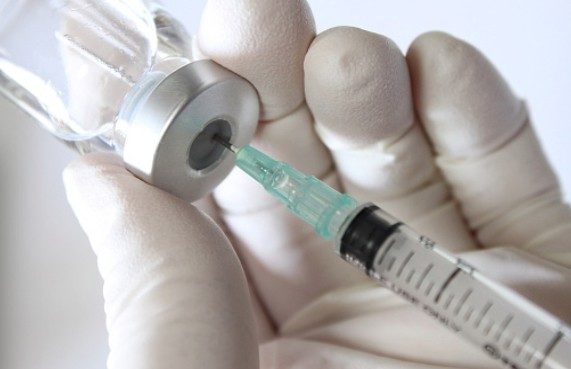
This article examines the evidence supporting the use of acetaminophen and reviews important nursing considerations” Peterson et al (2019). Abstract: THE FDA approved the use of I.V. acetaminophen in November 2010, but it has been commercially available in many countries outside the US since 2001.1 I.V. acetaminophen is indicated for managing mild-to-moderate pain, moderate-to-severe pain […]
Review of patient and caregiver-performed OPAT

The objective of this study was to characterize patient understanding of patient, caregiver, and health care worker roles in OPAT and barriers to fulfilling these roles, with the goal of understanding how to best support patients and their caregivers” Keller et al (2019). Abstract: BACKGROUND: Complicated medical therapies traditionally performed in acute care hospitals are […]
Achieving zero central line-associated bloodstream infections

Every health care facility aims to achieve and maintain a zero central line-associated bloodstream infection (CLABSI) rate. Infections can be costly for institutions of any size and are often not covered by health insurance” Jamous et al (2019). Abstract: Every health care facility aims to achieve and maintain a zero central line-associated bloodstream infection (CLABSI) […]
Complications of upper extremity versus lower extremity neonatal PICC

To compare the risks of catheter-related complications between peripherally inserted central catheters placed via the upper and lower extremities in neonatal intensive care units” Chen et al (2019). Abstract: OBJECTIVE: To compare the risks of catheter-related complications between peripherally inserted central catheters placed via the upper and lower extremities in neonatal intensive care units. RESEARCH […]
Review of sharps safety-engineered device use in the UK

The 2013 UK sharps safety regulations require healthcare facilities to use safety-engineered devices (SEDs) to protect staff. The recent increase in UK-reported occupational exposures could indicate increased reporting or increased exposures from suboptimal SED use” Grimmond (2019). Abstract: BACKGROUND: The 2013 UK sharps safety regulations require healthcare facilities to use safety-engineered devices (SEDs) to protect […]
Future trends in the efficacy and safety of transfusion medicine
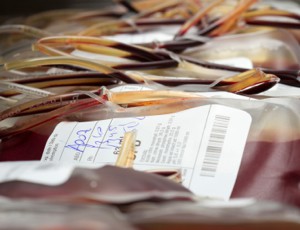
The important scientific and clinical advances of the last century in transfusion medicine include methods for avoiding hemolytic transfusion reactions and preventing transmission of viral infectious diseases” Blumberg et al (2019). Abstract: The important scientific and clinical advances of the last century in transfusion medicine include methods for avoiding hemolytic transfusion reactions and preventing transmission […]
Outcomes associated with PICC in hospitalised children

We sought to estimate the incidence of and identify the risk factors for complications associated with PICCs in an advanced registered nurse practitioners (ARNP)-driven programme” Badheka et al (2019). Abstract: OBJECTIVES: The use of peripherally inserted central catheters (PICCs) are an integral part of caring for hospitalised children. We sought to estimate the incidence of […]
Survey of patient preferences for hemodialysis vascular access

To determine the vascular access modalities used for hemodialysis, the reasons for choosing them, and determinants of satisfaction with vascular access among patients with end-stage renal disease” Balamuthusamy et al (2019). Abstract: OBJECTIVES: To determine the vascular access modalities used for hemodialysis, the reasons for choosing them, and determinants of satisfaction with vascular access among […]
Early identification of infusion-related reactions to monoclonal antibodies

Monoclonal antibodies constitute important and useful tools in clinical practice and biotechnology for diagnosing and treating infectious, inflammatory, immunological and neoplastic diseases” Cáceres et al (2019). Abstract: Monoclonal antibodies constitute important and useful tools in clinical practice and biotechnology for diagnosing and treating infectious, inflammatory, immunological and neoplastic diseases. This article reviews evidence on the […]
What do Cochrane systematic reviews say about ultrasound-guided vascular access?

The objective here was to summarize the evidence from Cochrane systematic reviews (SRs) on the effects of ultrasound-guided vascular access as an intervention approach” Attie et al (2019). Abstract: BACKGROUND: Ultrasonography is currently used in investigating many vascular diseases, especially for guiding vascular access. OBJECTIVE: The objective here was to summarize the evidence from Cochrane […]
Improving communication during peripheral IV catheter insertion

This article identifies areas in which nurses can improve their communication with patients before and during an SPC insertion and offers recommendations for how to obtain a focused vascular history before an SPC insertion” Plohal (2019). Abstract: Communication and patient education are crucial aspects of I.V. therapy, in which the clinical nurse is charged with […]
Fenestrated IV catheters for neonatal contrast infusion

The purpose of this study was to compare the pressure of injection rate and CT number of a 24-gauge fenestrated catheter with an 22-gauge non-fenestrated catheter for i.v. contrast infusion during CT” Yoshiura et al (2019). Abstract; PURPOSE: A three-dimensional (3D) image from computed tomography (CT) angiography is a useful method for evaluation of complex […]
Investigating the stability of meropenem in elastomeric infusion devices
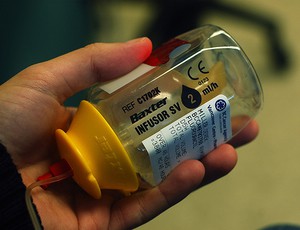
To evaluate the stability of meropenem trihydrate in elastomeric infusion devices at a range of selected concentrations (6, 12, 20 and 25 mg/mL) at ambient, refrigeration and freezing temperatures” Foy et al (2019). Abstract: PURPOSE: To evaluate the stability of meropenem trihydrate in elastomeric infusion devices at a range of selected concentrations (6, 12, 20 […]
Cannulation practices at haemodialysis initiation via an AV fistula or graft
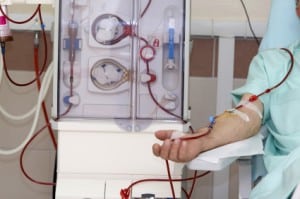
Cannulation trauma at the initiation of haemodialysis could potentially be reduced with a strategy of incremental haemodialysis using single-needle treatment supported with duplex ultrasonography assessment to ‘map’ the vascular access as a guide for clinicians prior to cannulation initiation” Hill et al 92019). Abstract: INTRODUCTION: A functioning long-term vascular access is required for haemodialysis therapy; […]
Which intravenous catheter lock solution works best?

Which catheter lock solution (CLS) works best and safe for patients with catheter-related blood infections (CRBSI) remains questionable. Therefore, we compared the efficacy of different catheter lock solutions (CLSs) for prevention of CRBSI and rank these CLSs for practical consideration” Dang et al (2019). Abstract: OBJECTIVES: Which catheter lock solution (CLS) works best and safe […]
Multicenter outbreak of gram-negative bloodstream infections in hemodialysis
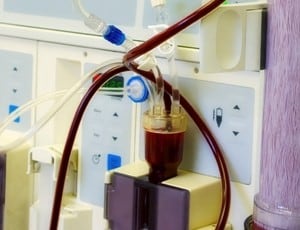
Contaminated water and other fluids are increasingly recognized to be associated with health care-associated infections. We investigated an outbreak of Gram-negative bloodstream infections at 3 outpatient hemodialysis facilities” Novosad et al (2019). Abstract: RATIONALE & OBJECTIVE: Contaminated water and other fluids are increasingly recognized to be associated with health care-associated infections. We investigated an outbreak […]
Intradialytic parenteral nutrition in Australian renal units

The objective of this study is to document the patterns of usage regarding intradialytic parenteral nutrition (IDPN) within in-center hemodialysis units in Australia” Lambert and Conley (2019). Abstract: OBJECTIVE: The objective of this study is to document the patterns of usage regarding intradialytic parenteral nutrition (IDPN) within in-center hemodialysis units in Australia. DESIGN AND METHODS: […]
Oral anticoagulant for the prevention of thrombosis in ambulatory cancer patients
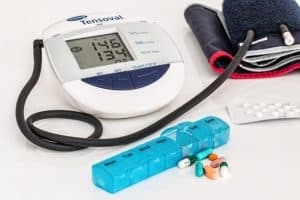
It is unclear if direct oral anticoagulant (DOAC) is efficacious and safe for prophylaxis of venous thromboembolism (VTE) in ambulatory patients with cancer” Li et al (2019). Abstract: BACKGROUND: It is unclear if direct oral anticoagulant (DOAC) is efficacious and safe for prophylaxis of venous thromboembolism (VTE) in ambulatory patients with cancer. METHODS: We performed […]
Factors in haemodialysis that impact on patients’ quality of life

The Vascular Access Questionnaire (VAQ) provides a mechanism for identifying and scoring factors in haemodialysis that impact on patients’ quality of life and perception of their therapy” Field et al (2019). Abstract: BACKGROUND: Haemodialysis is capable of prolonging life in patients with end stage renal disease, however this therapy comes with significant negative impact on […]
Complications of central venous implantable port systems

A venous port system is composed of a port chamber attached to a central catheter, which is implanted into the central venous system” Machat et al (2019). Abstract: Central venous port devices are indicated for patients, who need long-term intravenous therapy. Oncologic patients may require intermittent administration of chemotherapy, parenteral nutrition, infusions, or blood transfusions. […]
Extravasation following ultrasound-guided peripheral IV catheter placement

The objective of the current study was to compare the contrast extravasation rate for ultrasound-guided peripheral intravenous (USGPIV) catheter placement by emergency nurses with peripheral intravenous catheters placed by standard landmark techniques” Favot et al (2019). Abstract: INTRODUCTION: Vascular access procedures are among the most commonly performed procedures in the emergency department. The objective of […]
Prospective audit to study urokinase use to restore IV catheter patency

In this study, urokinase was safe and efficacious; there was no difference between dwell and push locks. There was some benefit with high-dose infusion of urokinase compared to the dwell and push lock” Kumwenda et al (2019). Abstract: OBJECTIVES: Tunnelled central venous catheters dysfunction can be defined as failure to provide blood flow above 200 […]
Impact of the distance between the tips of central venous catheters

We hypothesised that in patients requiring a CVC for infusion of drugs and a CVDC for RRT, their insertion in opposite internal jugular veins may not necessarily increase the distance between the line tips, and therefore may not prevent the direct aspiration of drugs” Butt et al (2019). Extract: We hypothesised that in patients requiring […]
Bloodstream infection at hemodialysis facilities in Jeddah

Bloodstream infections (BSI) are a major complication of hemodialysis. The risk of infection among hemodialysis patients is usually associated with the dialysis procedure itself, specifically the means of vascular access” Alhazmi et al (2019). Abstract: BACKGROUND: Bloodstream infections (BSI) are a major complication of hemodialysis. The risk of infection among hemodialysis patients is usually associated […]
Technique for flushing peripheral IV catheters

Nursing practice and institutional policies regarding short peripheral catheter (SPC) flushing vary” Norton et al (2019). Abstract: Nursing practice and institutional policies regarding short peripheral catheter (SPC) flushing vary. These variations result in a lack of understanding about the factors that influence nurses’ SPC flushing practices and leave their effect on outcomes unexplored-information that could […]
OPAT review compares activity from 1999 with that of 2016

The aim of this study was to report the characteristics, diagnoses, treatment and outcomes of patients managed by the service over 12 months in 2015/6 and compared these features with those of patients treated with OPAT in 1999″ Chambers et al (2019). Abstract: AIM: Outpatient parenteral antimicrobial therapy (OPAT) has become an established option for […]

